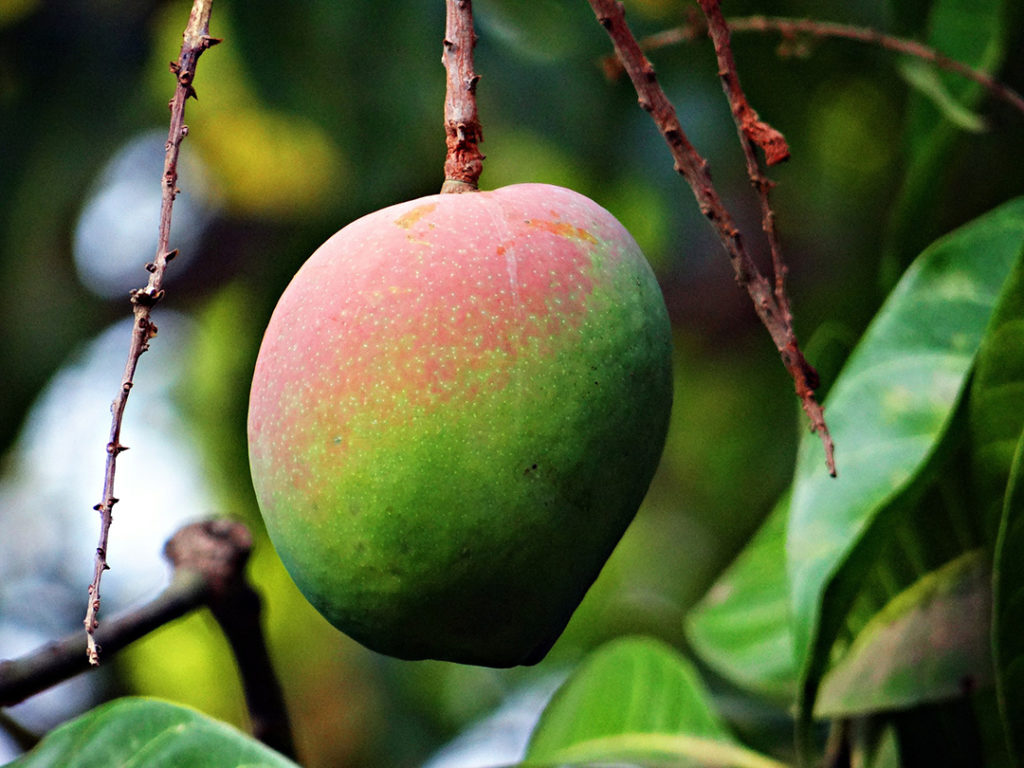
Brazil
Mango
Mangifera indica

General Description / Cultural Significance
Most people in Brazil grow up in small villages with a mango tree in their backyards, and this isn’t surprising, as the mango was used in indigenous medicine for over 4,000 years prior. The first thing you do when you buy a house or a farm is plant a mango tree for shade and fruit. And in the summer they scent the air. Even in Brasilia they planted mango trees. There are other important scents for Brazil, like the tree from the same family, the Cashew tree. There are also the citrus smells of orange and lemon and other tropical smells like guava and passion fruit, but the colorful, fragrant mango is enjoyed as a meal. It is often lunch.
Brazilian mangos are now one of the most famous and widely eaten fruits in the world and now it’s not just Brazilians that can identify the mango by its scent alone. The variety most typically grown commercially is Tommy Atkins, but Honey mangos and Palmer mangos are also cultivated, along with Keitt and Kent varieties. Brazil is known for its rainforests, but the scent that people think of when they think of Brazil is often fresh mango. And with good reason. Mangos possess exceptional qualities, including antioxidant, anti-inflammatory, antibacterial, antifungal, antiparasitic, antitumor and more. They not only protect the digestive system with vitamins, minerals, and amylase and pectin compounds, mangos protect against many other diseases too.
Climate Change/Conservation Status
Global warming’s impact on the Amazon has scientists fearing the worst. Repeated droughts have caused significant tree loss and stunted the growth of flora including the mango. These intensifying droughts are leading to degradation, which will increase carbon emissions to amounts that surpass those produced by deforestation. Many people in Brazil understand the value and meaning of the Amazon rainforest globally, and among them, many of the activists are indigenous peoples. They are also among those who are killed in their activist activities. Global Witness data shows that Brazil is the deadliest country in the world for defenders of the environment, with 49 killed in 2016. Most of the time, they are murdered by contract killers, hired by oil companies or logging and mining interests. In a situation driven by short-term economic interests, deforestation of the Amazon rainforest has increased by 29% in 2017. As one of the many fruits of the rainforest, mangoes collectively are under threat from tree loss.
Science reported in August of 2016, that during the first seven months of the year, satellites documented 46,000 wildfires in the country. This was a 60% increase in wildfires from 2015. Moreover, humans clearing land for new agricultural fields and pastures are to blame for setting most of them. It is thought that the fires being used for deforestation are related to the economic crisis, but climatologist fear the drought will continue and there are not the national polices in place to stop the practice.
In August 2017 the rainforest got another blow to conservation efforts. Brazil’s government abolished a national reserve created in 1984 that is 18,000 square miles (about the size of Denmark), which opens the area to commercial mining gold and copper and other minerals. (9) Again, this is a threat to indigenous people’s survival, biodiversity and to the world as the conditions of climate change are increasingly felt.
Illegal mining of gold and other precious metals that are used in cell phone production are also having environmental and social impacts. Toxic pollutants are but one of the impacts on rivers and plants that are escalating. Between August 17th and July of 2018, deforestation of the Brazilian rainforest rose by 13.7%, which Brazil’s environmental ministry has said is the highest increase in a decade.
The January 2019 collapse of a mining dam near Brumadinho released what was described as a “tidal wave of toxic mud”, which buried alive over a 150 people and crushed homes and buildings. A review of the dam’s failure reports that there are eighty-eight dams built just like the one that collapsed, so this disaster could clearly happen again. And many of them are just miles upstream from populated areas.
In 2021, despite international pressure to stop the destruction, the National Space Research Agency said that the deforestation of the Brazilian Amazon had already reached 1,157 square kilometers (the size of Los Angeles). A study by France’s National Institute for Agronomic Research found that the rainforest has now emitted 20 percent more carbon dioxide than it absorbed over the past decade. Scientists say that the Amazon rainforest is a sign of one of many alarming tipping points signaling that the climate system is nearing an irreversible course.
Alternate Names
Manga
Sources
Ms. Edvania Leite, Cultural Department, The Consulate of Brazil. This statement can be found on the World Sensorium original website.

